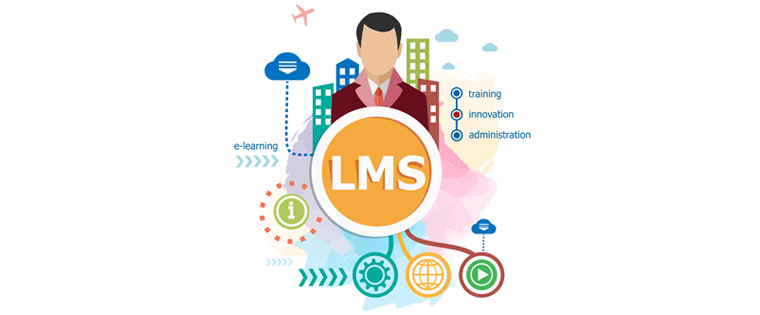In the ever-evolving landscape of digital education, Learning Management Systems (LMS) have become pivotal in delivering effective and scalable learning experiences. Among the plethora of LMS platforms available, Moodle stands out as a robust, flexible, and open-source solution that has been adopted by educational institutions and organizations worldwide. As we delve into 2024, understanding the features and benefits of Moodle LMS development is crucial for educators, administrators, and developers aiming to enhance their e-learning offerings.
What is Moodle?

Moodle lms training, an acronym for Modular Object-Oriented Dynamic Learning Environment, is a free and open-source LMS designed to provide educators, administrators, and learners with a single robust, secure, and integrated system to create personalized learning environments. Its modular design allows for the addition of plugins to enhance functionality, making it a versatile platform for various educational needs.
Key Features of Moodle LMS in 2024
1. Customizable Course Design
Moodle offers a highly customizable course structure, allowing educators to design courses that align with specific pedagogical goals. Courses can be organized by weeks, topics, or social formats, providing flexibility in content delivery.
2. Secure Authentication and Enrollment
The platform supports secure authentication methods, including LDAP, OAuth2, and SAML2, ensuring that only authorized users access the system. Enrollment options are equally versatile, supporting self-enrollment, manual enrollment, and cohort synchronization.
3. Multilingual Support
Recognizing the global reach of education, Moodle supports over 100 languages, facilitating learning in diverse linguistic contexts.
4. Collaborative Tools
Moodle incorporates various collaborative tools such as forums, wikis, glossaries, and databases, promoting interactive learning and knowledge sharing among students.
5. Extensive Plugin Ecosystem
With a vast repository of plugins, Moodle allows for the integration of additional functionalities like attendance tracking, gamification, and advanced reporting, enabling institutions to tailor the LMS to their specific needs.
6. Mobile Accessibility
The Moodle Mobile app ensures that learners can access course materials, participate in activities, and receive notifications on-the-go, enhancing the flexibility of learning.
7. Advanced Assessment and Grading
Moodle provides comprehensive assessment tools, including quizzes with various question types, assignment submissions, and peer assessments. The gradebook offers detailed tracking of student performance, supporting formative and summative evaluations.
8. Learning Analytics
The platform’s analytics feature enables educators to monitor learner engagement and performance, identifying students who may need additional support and informing instructional strategies.
9. Integration Capabilities
Moodle supports integration with third-party applications and services through standards like LTI (Learning Tools Interoperability), allowing for a seamless educational ecosystem.
10. Compliance with Accessibility Standards
Committed to inclusive education, Moodle adheres to accessibility standards such as WCAG 2.1, ensuring that learners with disabilities can effectively use the platform.
Benefits of Moodle LMS Development

1. Cost-Effectiveness
As an open-source platform, Moodle eliminates licensing fees, making it a cost-effective solution for institutions seeking to implement or upgrade their LMS.
2. Scalability
Moodle’s architecture supports scalability, accommodating the growth of user bases and course offerings without compromising performance.
3. Community Support
With a global community of developers and educators, Moodle benefits from continuous improvements, shared resources, and collaborative problem-solving.
4. Flexibility and Control
Institutions have full control over their Moodle installations, allowing for customization of features, appearance, and integrations to meet specific requirements.
5. Enhanced Engagement
Interactive features and multimedia support in Moodle foster learner engagement, catering to various learning styles and preferences.
6. Data-Driven Decision Making
The analytics and reporting tools provide valuable insights into learner behavior and course effectiveness, informing data-driven decisions to enhance educational outcomes.
7. Continuous Development
Regular updates and a commitment to innovation ensure that Moodle evolves to meet emerging educational trends and technological advancements.
Moodle LMS Training and Support

Effective utilization of Moodle requires adequate training for educators and administrators. Numerous resources are available, including official Moodle documentation, community forums, and certified training programs. These resources cover various aspects, from basic navigation to advanced course development and system administration.
Implementing Moodle LMS: Best Practices
- Needs Assessment: Identify the specific requirements of your institution to tailor Moodle’s features accordingly.
- Pilot Testing: Conduct pilot programs to gather feedback and make necessary adjustments before full-scale implementation.
- Training Programs: Invest in comprehensive training for all users to maximize the platform’s potential.
- Continuous Evaluation: Regularly assess the effectiveness of the LMS and make iterative improvements based on user feedback and performance data.
Conclusion
Moodle learning management system stands as a powerful tool in the realm of digital education, offering a blend of flexibility, scalability, and community-driven development. Its comprehensive features and benefits make it an ideal choice for institutions aiming to deliver quality education in a dynamic and accessible manner. By embracing Moodle’s capabilities, educators and administrators can create enriching learning environments that meet the evolving needs of learners in 2025 and beyond